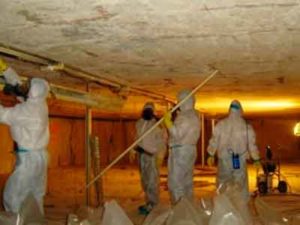Molds are various species of fungi (simple, microscopic organisms) that are present everywhere both indoors and outdoors. For molds to grow and reproduce, they need only a source of organic material for food, such as leaves, wood, paper and moisture.



Mold requires water to grow. Buildings with moisture problems such as empty buildings with uncontrolled humidity or roof leaks are primary mold targets. Changes in building practices in the 70’s, 80’s and 90’s have resulted in tightly sealed buildings without adequate ventilation, which can lead to moisture buildup. Moisture problems can be caused from roof leaks or landscaping or gutters directing water into or under the building, or result from flooding or other natural disasters. Sometimes you can detect the odor of mold, but indoor mold may not always be visible. It is possible the mold may be growing on hidden surfaces, such as the backside of walls. Other places where mold is commonly found is in HVAC systems such as on air ducts, insulation inside air handler covers and on air diff users in ceilings and walls.
While molds are needed to break down debris in the environment, mold and other fungi contamination can pose serious problems in your home or building. Mold and fungus can grow in any area where moisture is present. Molds and fungi are typically found in damp areas such as wall cavities, closed attics, unvented bathrooms, sink cabinets, and other areas where leaks and/or condensation occur. Noticeable indicators of mold or fungal growth include black spots or speckles, often along with a musty or mil dewy odor. Mold is damaging to personal property, and also may affect the health of people exposed to it, especially those with asthma or allergies.






When extensive amounts of mold exist within a building, properly trained professionals should always perform the removal. Even in cases of small scale mold infestations, don’ t take any chances. Call Gorafix, Inc. today for testing and inspection.
The Steps We Take
- In depth interview with you regarding your concerns and goals for your building.
- We refer you to a qualified mold hygienist and stay in constant contact regarding your project. Once a report is produced, we will review it with the hygienist to verify scope of work.
- Based on the age of your building, the hygienist will verify asbestos / lead at the property.
- Containment chambers will be set up in order not to contaminate unaffected areas
- Clean and/or Removal of accessible mold damaged materials
- Final inspection and testing will be performed by the hygienist to assure mold has been re-mediated properly.


